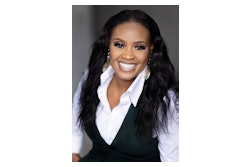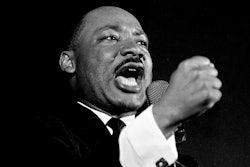GREENBELT, MD. — When NASA electronics engineer Robyn L. King tells the 10 summer interns he oversees at Goddard Space Flight Center that “the sky’s the limit,” it’s not just an empty idiom. Through a three-year collaborative research project that for the first time involves the space flight center and two HBCUs, orbit is a real-life potential destination for the microelectronics designs that the interns work on here each day. When prospective employers see the students’ NASA experience listed on their resumes, King predicts the employers will conclude the students gained meaningful research experience.
“They weren’t at a ‘busy work’ summer program that had a lot of fluff in it,” King says employers will deduce. “It was at least substantive.”
A Diverse reporter paid a visit to the students this summer and found them assembled in a room within Building 11 here at Goddard.
With laptops, the students were busy analyzing and trying to improve upon a digital library of microelectronic designs that could one day comprise the components of future spacecraft.
Their world is a highly technical one where they speak of things in terms of microseconds, converting signals from analog to digital, and of dealing with inputs, outputs and integrated circuits.
Laurence Womack, 20, a senior at Tuskegee who is majoring in electrical engineering, says one of the most interesting aspects of the internship is being able to work on digital software that can guide spacecraft.
Asked what he hopes to gain from the internship, Womack said, “really just a lot of networking and basic professional skills.” Networking definitely ranks at the top of the list of things students can do here at Goddard, where employees include an array of accomplished individuals. In addition to an occasional visit to other Goddard facilities, such as the space flight center’s Thermal Vacuum Chamber, meant to replicate the extreme cold and hot temperatures of space, the students are encouraged to attend lectures by various speakers on the Goddard campus. The other day the itinerary included Goddard-based astrophysicist John C. Mather, winner of the Nobel Prize in Physics in 2006.
The students’ internship was made possible through the NASA Science and Technology Institute for Minority Institutions, or NSTI-MI, a program of the UNCF Special Programs Corporation that is funded in part through a cooperative agreement with NASA.
The program awards $100,000 per year to participating universities for up to three years. Half the money is to pay the interns $10,000 stipends. The rest can be used to cover indirect costs incurred by participating universities.
The institute has been implemented at other NASA centers before, but this is the first time the program has sent interns to Goddard, a storied campus that has played central roles in historic space endeavors that range from Project Mercury, America’s first manned space flight program, to the Hubble Space Telescope.
Dr. Lucy McFadden, chief of university and higher education programs at Goddard, said the internship provides a rich experience for the students because the work they’re doing is needed by the center.
“Producing this library is going to give them opportunities to start designing themselves and will give them experience that will give them marketing skills,” McFadden said. “It definitely prepares students for job opportunities.”
McFadden said one of the reasons Tuskegee and Alabama A&M were selected for the internship project is because university faculty began communicating with Goddard early in the application process.
“This program worked because the professors contacted me many months before the proposal was due,” McFadden said. “We had an opportunity to engage in conversations and explore our areas of expertise and common interest, so when they wrote the proposal, we could be clear in what the plan was and what was the nature of the expertise.”
Dr. Zhigang Xiao, an associate professor in the department of electrical engineering and computer sciences at Alabama A&M, had the kind of expertise NASA was seeking, King said.
Xiao said the work the students are doing is important because it can potentially make microelectronic components smaller, cheaper and easier to produce.
King says the project is all the more meaningful because it involves collaboration with two NASA contractors: Mentor Graphics in Wilsonville, Ore. and Triad Semiconductor of Winston-Salem, N.C. King said the interns have been informed that the components they’re learning to evaluate are the same ones that some engineers will design more powerful microchips with in the future.
“They could do it if they wanted to,” King said. “I gave them that challenge.”
McFadden said one of the things she plans to evaluate is how many students get jobs as a result of their internships. “We can test it to see if they hire these kids when they graduate,” McFadden said


















